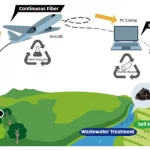
Denim manufacturing, from cotton farming to garment production, carries significant environmental impacts. Despite introducing sustainability within the denim industry, the environmental benefits of related practices are not thoroughly assessed and contrasted with conventional manufacturing practices.
Recent research findings reveal that Yarn and fabric production contribute to 56% of greenhouse gas emissions and 45% of terrestrial acidification, while cotton cultivation accounts for 92% of water consumption and 69% of land use. Compared to traditional methods, green manufacturing practices achieve reductions in greenhouse gas emissions and water use by over 60% and 21%, respectively. These findings underscore the potential for sustainable practices to mitigate the environmental footprint of denim production while highlighting areas for further improvement. This study delivers critical insights for advancing sustainability in the denim industry.
A recent study has provided an in-depth environmental assessment of denim trouser production in Bangladesh, comparing conventional (S1) and green (S2) manufacturing scenarios. The findings highlight substantial environmental benefits associated with green factories, showcasing the potential for significant reductions in various environmental impacts.
The study’s results reveal that green manufacturing facilities achieve remarkable reductions in greenhouse gas emissions by 64.3%, eutrophication by 53.5%, terrestrial acidification by 46%, water use by 21.7%, and abiotic resource depletion by 34.1%. These improvements are primarily attributed to the adoption of advanced energy-efficient technologies, the integration of renewable energy sources, and the implementation of wastewater recycling systems in green manufacturing facilities.
However, the study also identifies ongoing challenges in cotton cultivation, which accounts for 92% of total water consumption. Intensive irrigation and fertilizer application contribute significantly to eutrophication and terrestrial acidification. Additionally, a large portion of greenhouse gas emissions (35% of total CO2-eq) still occurs during the garment manufacturing phase, underscoring the need for further innovations such as waterless washing and robotic cutting technologies.
The study emphasizes the great potential of green factories to significantly reduce the environmental footprint of denim production. Nevertheless, it acknowledges certain limitations, including the focus on cradle-to-gate lifetime analysis, which omits the life cycle impacts of transportation, usage, and disposal stages. Furthermore, the geographical focus on Bangladesh limits the generalization of results to regions with different production practices, energy fields, and resource availability.
Future research aims to address these limitations by adopting a cradle-to-grave framework, examining mitigation strategies in cotton farming, and considering multi-regional assessments to evaluate the global scalability of green manufacturing practices. By advancing these insights, the study lays a crucial foundation for the sustainability of the denim industry.





